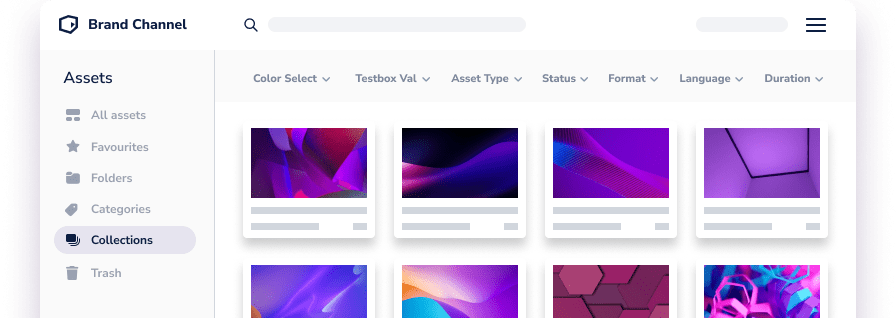Product Experience Management – The Ultimate Guide to PXM
Industry Insights
Updated on February 14, 2025
The ability to deliver outstanding product experiences is more than just a nice-to-have; it’s crucial for differentiating your brand and driving customer loyalty.
This article explains the ins and outs of product experience management (PXM) and how integrating the right technology stack can transform customer interactions into meaningful connections.
What is Product Experience Management (PXM)?
Product experience management (PXM) is a strategic approach e-commerce businesses use to optimise and personalise how they showcase products across various sales channels to meet or exceed customer expectations.
PXM integrates with various aspects of digital commerce, including product information management (PIM), customer relationship management (CRM), market research, and marketing tools, to create a seamless and compelling product experience.
Here are some key components and benefits of product experience management:
- Comprehensive Product Information: PXM ensures that detailed and accurate product information is maintained. This includes descriptions, specifications, pricing, availability, and multimedia resources like images and videos. Accurate information helps in reducing return rates and increasing customer satisfaction.
- Consistency Across Channels: It ensures that product information is consistent across all sales channels, whether online (e.g., e-commerce platforms, social media) or offline (e.g., retail stores, catalogues). This consistency is crucial for maintaining brand integrity and trust with customers.
- Personalisation: PXM leverages customer data to personalise the product experience based on individual preferences, past shopping behaviour, and demographics. Personalisation can significantly enhance the customer journey, leading to increased engagement and sales.
- Optimised Search and Discovery: Effective PXM strategies improve searchability and discoverability of products through optimised search engine keywords, categorisation, and tagging. This helps customers find products more easily, enhancing the overall shopping experience.
- Dynamic Content: PXM allows for dynamic content updates, where product information can be adapted or customised in real time based on market trends, inventory levels, customer behaviour, and other analytics.
- Integration with Marketing and Sales: PXM integrates closely with marketing tools to ensure that promotional messages and offers are aligned with the product information. This integration helps in launching effective marketing campaigns that are consistent with the product’s current data and market positioning.
- Analytics and Feedback: Advanced PXM platforms incorporate analytics to monitor how products are performing across different channels and customer segments. Feedback mechanisms are also part of PXM, allowing businesses to gather insights directly from consumers to continuously improve product offerings.
Overall, product experience management is a dynamic and integral part of modern e-commerce strategies, focusing on delivering a superior product experience that drives engagement, conversion, and loyalty.
It is especially crucial in a highly competitive online market, where customer experience often dictates the success of a brand.
Product Experience Management Made Easy
See the only DAM solution built for PXM applications
Why Product Experience Management Matters
Understanding PXM is crucial for both e-commerce brands and shops. PXM matters because it helps you and your brand create and provide high-quality product information that enhances customer touchpoints throughout the buying journey.
A great PXM strategy ensures that your products appear compelling on the digital shelf and cater to the diverse needs of your consumers.
PXM vs Customer Experience Management
Unlike customer experience management (CEM), which focuses on the end-to-end customer journey, PXM zones in on the nuances of product interactions and their impact on consumers’ buying decisions.
An example of successful product experience management is when customers’ find items online, but go to a brick-and-mortar store to find out more information about the product, touch it, and interact with it. When this meets customer expectations, they are likely to make the purchase.
On the other hand, if customer experiences are bad, they will not buy the product and their perception of the brand and its products is ruined.
For many brands, delivering on customer expectations on both the digital shelf and the retail shelf is the key advantage PXM solutions provide.
What is CEM?
CEM is the customer-centric approach under which PXM falls. CEM considers every interaction between a customer and a brand throughout the entire customer lifecycle. This includes customer support interactions, purchasing processes, and product usage.
CEM aims to optimise these touchpoints to build loyalty and improve customer satisfaction. The focus is very broad and covers every interaction potential customers may have, from digital channels to in-store experiences.
How PXM Focuses on Product-Centric Interactions
In contrast, Product Experience Management (PXM) hones in specifically on how products are presented and experienced across various platforms.
PXM strategies are designed to ensure that product information is consistent, accurate, and tailored to meet the diverse needs of potential customers at every point in the buying journey.
Effective PXM ensures every piece of product content—from descriptions and images to reviews and ratings—works to effectively convey the value of the product and build an emotional connection with the shopper.
The Impact of PXM on CEM
While PXM is more narrowly focused, it is a crucial component of CEM. PXM directly influences overall customer experiences, contributing to a more holistic customer experience strategy.
Effective PXM ensures that the product itself is a key part of the satisfaction customers derive from their interactions with a brand, thereby driving sales and building loyalty.
PXM Principles:
A cohesive and well-executed PXM strategy is key to managing customer touchpoints with products effectively. Personalised interactions are shown to dramatically increase sales – both digital and in-store.
Here are some basics to provide you with a deeper understanding of how you can develop a complete solution to manage your digital catalogues, build a better shopping journey, and win on the digital shelf with optimised product content.
Integrating Product Data with Customer Data
Combining these data streams provides a richer, more complete view of customer interactions, enabling personalised experiences that are aligned with customer needs and preferences.
No two customers will perceive your products in the same way, so it’s crucial to implement a PXM solution that can maintain consistent product information, helps you tell compelling product stories, and optimises the buying experience throughout the entire customer journey.
The Role of Digital Asset Management (DAM) in PXM

Comparing DAM Providers? Download Our Free Playbook!
Free download nowDAM systems are invaluable in PXM because they help brands manage and deploy high-quality digital content efficiently, ensuring relevance and consistency across all e-commerce platforms, retailers, and advertising platforms.
A DAM system enhances your omnichannel strategy by ensuring content is organised, protected, stored, and shared. It also ensures you’re using the correct visual content everywhere, and that your product experiences stay consistent across channels because you won’t be dealing with outdated assets.
Coupled with product content syndication capabilities, a DAM can also help you distribute visual content more efficiently, which is key for busy e-commerce professionals who can now focus on other tasks – like creating more product content.
The Role of Product Information Management (PIM) in PXM
PIM solutions streamline managing product data across multiple channels, ensuring that all product content is accurate, up-to-date, and tailored to the specific requirements of each sales channel.
PIM software acts as a central hub for all product information, which ensures every piece of content – from basic product descriptions and specifications to pricing and availability – is accurate and up-to-date.
A PIM solution also tailors this information to meet the standards and requirements of each sales channel, regardless of whether it’s an e-commerce platform, a physical retail shop, or a third-party marketplace.
The result is that customers have a consistent product experience everywhere they go. Plus, retailers can ensure that they meet brand consistency guidelines for all the products in their shop with minimal manual work.
You can read our comprehensive article on the difference between PIM and PXM for a more detailed breakdown.
Achieving Synergy Between DAM, PIM, and PXM
DAM and PIM systems play pivotal roles in successful PXM by ensuring that digital assets and product data are efficiently managed and synergised. DAM systems allow for the centralised management of digital content, making it easier for brands to maintain consistency across all e-commerce platforms.
Similarly, PIM systems ensure that detailed, up-to-date product information is easily accessible and distributable, enhancing product content quality and supporting personalised interactions.
DemoUp Cliplister – The Missing Piece of Your PXM Stack

Even if you have the best DAM system, PIM software, and PXM solution in the world, it won’t matter if you can’t deliver product content to the point of sale.
DemoUp Cliplister provides a unique solution combining digital asset management with content syndication technologies, which bridges the content gap between brands and online retailers.
DemoUp Cliplister’s syndication for brands allows manufacturers to deliver product videos, 3D models, and AR experiences directly to the image gallery at 450+ online retailers worldwide. This ensures a consistent brand experience across the digital shopping journey.
On the other side, retailers who join the syndication network can access exclusive content from over 2,500+ global brands like Sony, Samsung, and Bosch. This helps online shops create more engaging product experiences directly on the product detail page.
The result is happier consumers, a faster flow of content and product data between brands and online shops, and a more efficient process for everyone involved.
Add to this a DAM solution that helps you with creating, managing, and publishing content at scale, it’s easy to see why DemoUp Cliplister is trusted by the world’s leading brands and shops.
Want to learn more about what DemoUp Cliplister can do for your brand or online shop? Get in touch with one of our e-commerce experts and we’ll be happy to show you the solution on a live, personalised demo.
Recommendations for Effective Product Experience Management
To implement and maintain an effective PXM strategy in your company, it makes sense to integrate it with other relevant systems.
Continuously monitor product content and always ensure it’s up-to-date. Set KPIs and measure performance against them, so you can optimise your strategy.
Build PXM Capabilities Using Existing Systems
A product experience management solution is compatible with central software solutions and can be easily integrated into product information management (PIM) or digital asset management (DAM) systems.
As a company, you benefit from a unified structure for all your digital assets, including all of your company’s product information. This organisation positively impacts product experience management by creating seamless customer experiences.
Note: Already have existing PIM capabilities? Book a demo of the DemoUp Cliplister DAM to see how it can help you achieve a more effective PXM system, or view the best digital asset management software by use case.
Monitor and Update Product Content
The quality of your content plays a vital role in creating an engaging product experience. Ensure all your videos, 3D product models, and images are always up-to-date. Review product data on a regular basis and optimise your campaigns to achieve maximum performance.
Use Analytics and Insights to Optimise Your Product Strategy
A product experience management solution helps you manage and analyse all your product content. By paying attention to KPIs and how they change over time, you can adjust and optimise your strategy. Content intelligence features should be included in any PX solution you deploy.
Wrapping Up
Product experience management is a customer-centric approach focused on providing personalised experiences with products. PXM makes telling compelling product stories easier for any e-commerce retailer, no matter if it’s a brand or online shop.
A solid customer experience also increases your revenue through increased sales and improved brand awareness. According to a recent report by Topsoft Magazine, an effective PXM solution also has a significant positive impact on customer acquisition rates.
Lastly, Combining PIM and DAM software to add to an existing PXM solution helps you understand how your product content performs online across relevant channels.
Use data-driven customer feedback to maximise customer satisfaction and your success in the market and with support from DemoUp Cliplister. We provide a range of PXM solutions for global e-commerce brands and shops looking to improve their product content.
For more information on e-commerce, digital asset management, and content creation, visit our blog.
Want to learn more about DemoUp Cliplister’s products and services? Let’s talk!
Frequently Asked Questions
PXM is the process of delivering tailored product presentations across various channels to enhance customer interaction, satisfaction, and drive better engagement throughout the shopping experience.
PIM primarily manages backend product data, ensuring accuracy and organisation. PXM utilises this data to create consistent, engaging customer-facing experiences across all sales channels.
Implementing PXM boosts customer satisfaction, enhances brand perception, increases conversion rates, and builds loyalty by ensuring consistent, personalised, and complete shopping experiences.
PXM uses tools like product information management systems, digital asset management, customer relationship management platforms, and analytics to craft and manage product experiences.
Effective PXM strategies lead to higher customer engagement, better retention rates, and increased sales by making product discoveries and purchases more intuitive and satisfying.
Digital Asset Management (DAM) systems store, organise, and distribute digital content like images and videos, essential for PXM. DAM ensures that all digital marketing materials are up-to-date and accessible, enhancing the consistency and appeal of product presentations across channels.
Content syndication extends the reach of your product content to various platforms and marketplaces, ensuring consistent product messaging and enhancing visibility and conversion opportunities across multiple channels.
DemoUp Cliplister can integrate into any existing software or workflows via a powerful API. With both DAM and syndication capabilities, DemoUp Cliplister fills the gap that exists between brands and retailers when it comes to the development, management, and deployment of visual content.
Better Content. More Sales.

Fill out the form to discover our end-to-end eCommerce content solutions for brands & shops




